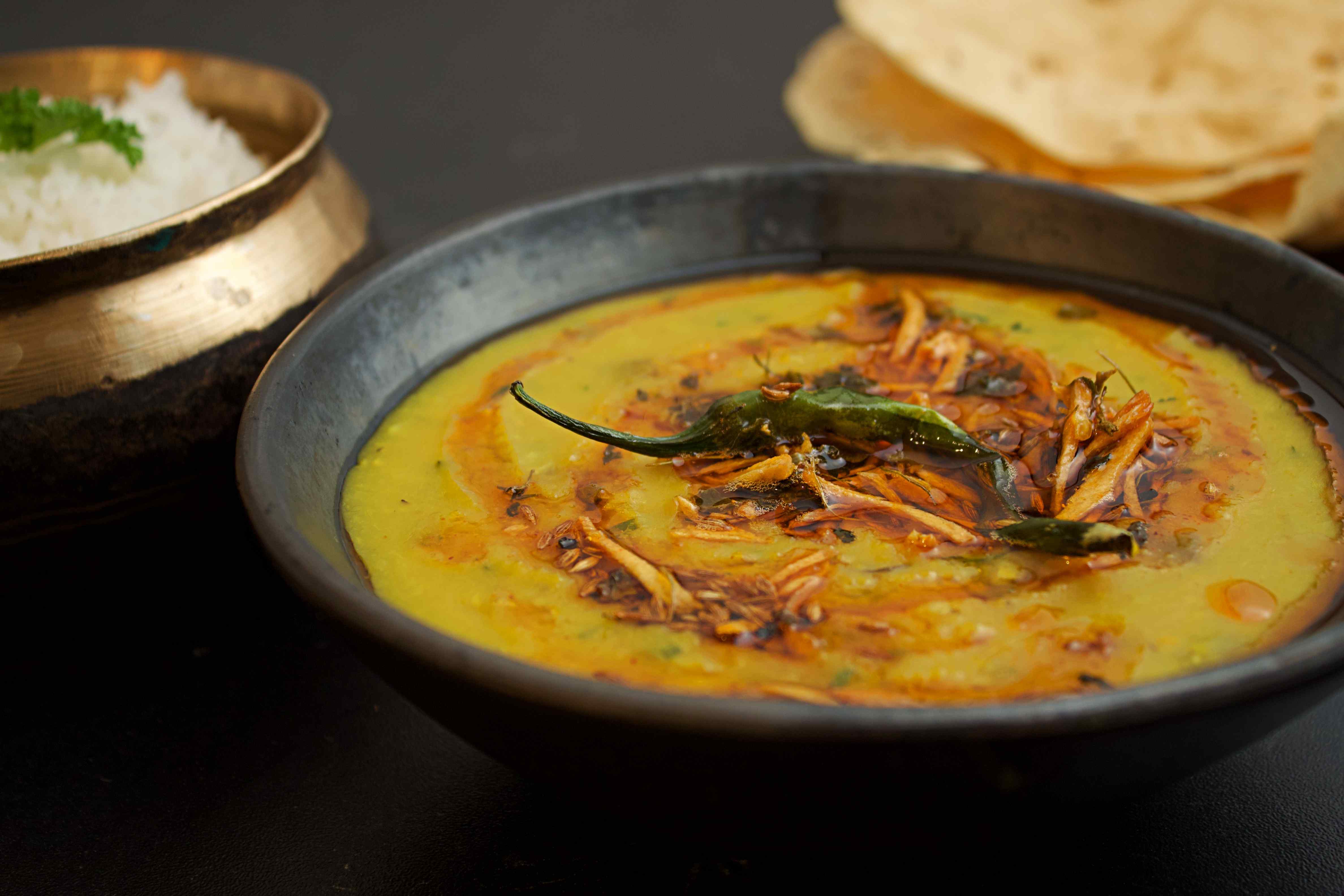Think of this recipe as your basic dal recipe to prepare any kind of lentil. This is a classic Punjabi lentil dish (dal). It's easy, quick, nutritious and is made with pantry ingredients. Moong Masoor is my father's favorite dal and there isn't a week that goes by at my parents place when this isn't on the menu. In a Punjabi home, dal is a staple and is usually served with whole flat wheat bread (roti aka chapati) and a vegetable stir fry (subzi). However, this goes just as well with rice.
This dal is quick because it uses split and skinned lentils that cook quickly and don't require much soaking. If you don't have both moong and masoor dal, you can also make this with either one. Alternately, you can also make this recipe with other split skinned lentils like toor dal or urad dal.
- 3/4 cup split skinned yellow mung lentils (moong dal)
- 1/4 cup skinned red lentils (masoor dal)
- 1/2 tsp turmeric powder (haldi)
- 150g or 1 medium onion
- 20g ginger
- 1-2 garlic cloves
- 1 tsp salt
- 10-12 springs coriander
- 2 tbsp ghee or butter or oil
- 1 tsp cumin seeds (jeera)
- 1/8 tsp asafoetida (hing)*
- 2-3 large garlic cloves
- 1-2 green chillies *optional*
- 50g shallots (sambar onions)
- 1 tsp dried fenugreek leaves (kasoori methi)**
- 1/2 tsp mild red chilli powder (kashmiri laal mirch) *optional*
Dal
- Rinse the lentils well until the water is no longer cloudy. It should take 4-5 washes and then soak the lentils in room temperature water for 30 minutes while you prep the other ingredients.
- In the meantime, pound the ginger and garlic (for the dal) into a paste in a mortar and pestle or grater. Alternately, you can finely chop them or use a grater.
- Finely dice the onion and roughly chop the coriander leaves, mince the stems separately if you have a lot of them.
- Drain the soaking water from the dal and add it to a pressure cooker or pot. Add 3 cups of water along with all the other dal ingredients mentioned above (minced ginger garlic, chopped onion) turmeric and salt.
- Pressure cook or cook with the lid on at medium to low heat till the dal is completely soft and easily mashable. It should take 2 whistles in the pressure cooker or about 30 mins in a regular pot.
- Add the coriander stems in at this point if you have them. Stir and mash some of the dal with the back of a wooden spoon to get a more creamy consistency, don't be afraid to mash the dal. Stir it like you mean it :)
Tadka
While the dal cooks, prepare the ingredients for the tadka. This garlic, shallot and spices infused ghee is going to flavor the dal and elevate it from some bland boiled lentils to something scrumptious so this is a step you certainly cannot skip! It all happens very quickly since the oil is hot, so you should have all your ingredients chopped and ready at hand.
- Finely slice the shallots the garlic, as thin as you possibly can.
- Slit the green chillies, alternately you can also use whole dried red chillies of any kind.
- Heat your ghee (or butter or oil, in that order of preference) in the smallest cooking pot/pan you own. In India, we have these special tadka pans, they are super cute.
- Once the oil is quite hot add in your cumin seeds and wait for them to sputter. Then add in the asafoetida, followed but the garlic and chillies.
- Once the garlic begins to brown, add the shallots and stir. When the shallots start to brown around the edges and turn crispy, turn off the heat and add the kasoori methi and red chilli powder.
- Immediately pour the tadka onto your dal and mix. Tadkas are synonymous with the delicious sizzling sound they make when added to dals and curries.
- Top with coriander leaves and serve with rice or roti.
*Asafoetida (Hing) - an unusual ingredient for the western world which is absolutely essential to most Indian lentil dishes. It's known to be a digestive aid and is thus added to flavour and compliment lentil dishes (which can often be difficult to digest). It can be found in any Indian store. They usually come in very small containers, are cheap and a little goes a long way. Since it's so pungent you usually only need a pinch or so per dish.
**Dried Fenugreek Leaves (Kasoori Methi) - while it is an optional ingredient, it is an essential ingredient in many Punjabi lentils, curries and breads. This bitter leaf packs a punch in terms of flavour and adds that extra oomph to your curries that you will not be able to replace with anything else. You can easily get your hands on some at an Indian shop and store these dried leaves in a tight container indefinitely.
